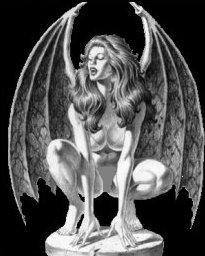Return Of The Montauk Monster
Workers at a golf course in Runaway Bay, an hour north of Fort Worth, Texas, recently found what they thought might be the carcass of the vampire beast "el chupacabra." The strange dog-like animal was mostly hairless, with tan-brown skin. It didn't look like anything the men had ever seen before. Was it the legendary goat-sucker, the bloodthirsty Hispanic version of Bigfoot? As it turns out, no. Jennifer Barrow, a biologist with the Texas Parks and Wildlife Department, examined the carcass and noted that the teeth, skull, and feet all matched a raccoon. It's not clear why the animal lost its fur, though there are several diseases that can cause hair loss. This is not the first time that a hairless raccoon has been (initially) misidentified as a monster. The so-called "Montauk Monster" was a strange creature that supposedly washed ashore on a beach in Montauk, New York, in July 2008. A photo of the odd animal circulated around the Web and became the subject of national media interest. Some thought it was a hoax; others believe that the photo depicted a pig, while others vaguely and cryptically suggest that the animal is somehow a result of "biological warfare." Darren Naish, a British paleontologist, examined photos of the animal and concluded it was a raccoon: "The Montauk monster... owes its bizarre appearance to partial decomposition," Naish said. "The tendency for the soft tissues of the snout to be lost early on in decomposition immediately indicates that the 'beak' is just a defleshed snout region: we're actually seeing the naked premaxillary bones. The match for a raccoon is perfect once we compare the dentition and proportions. The Montauk animal has lost its upper canines and incisors (you can even see the empty sockets), and raccoons are actually surprisingly leggy (claims that the limb proportions of the Montauk carcass are unlike those of raccoons are not correct)." It seems that a dead, hairless raccoon on Long Island will be called the Montauk Monster, while the same unfortunate beast in Texas will become the fearsome chupacabra. It is not surprising that people could not identify the dead animals, since most people have never seen a dead, hairless raccoon. Once again science shows that ordinary decay can create extraordinary monsters.
Darren Naish, a British paleontologist, examined photos of the animal and concluded it was a raccoon: "The Montauk monster... owes its bizarre appearance to partial decomposition," Naish said. "The tendency for the soft tissues of the snout to be lost early on in decomposition immediately indicates that the 'beak' is just a defleshed snout region: we're actually seeing the naked premaxillary bones. The match for a raccoon is perfect once we compare the dentition and proportions. The Montauk animal has lost its upper canines and incisors (you can even see the empty sockets), and raccoons are actually surprisingly leggy (claims that the limb proportions of the Montauk carcass are unlike those of raccoons are not correct)." It seems that a dead, hairless raccoon on Long Island will be called the Montauk Monster, while the same unfortunate beast in Texas will become the fearsome chupacabra. It is not surprising that people could not identify the dead animals, since most people have never seen a dead, hairless raccoon. Once again science shows that ordinary decay can create extraordinary monsters.
 Darren Naish, a British paleontologist, examined photos of the animal and concluded it was a raccoon: "The Montauk monster... owes its bizarre appearance to partial decomposition," Naish said. "The tendency for the soft tissues of the snout to be lost early on in decomposition immediately indicates that the 'beak' is just a defleshed snout region: we're actually seeing the naked premaxillary bones. The match for a raccoon is perfect once we compare the dentition and proportions. The Montauk animal has lost its upper canines and incisors (you can even see the empty sockets), and raccoons are actually surprisingly leggy (claims that the limb proportions of the Montauk carcass are unlike those of raccoons are not correct)." It seems that a dead, hairless raccoon on Long Island will be called the Montauk Monster, while the same unfortunate beast in Texas will become the fearsome chupacabra. It is not surprising that people could not identify the dead animals, since most people have never seen a dead, hairless raccoon. Once again science shows that ordinary decay can create extraordinary monsters.
Darren Naish, a British paleontologist, examined photos of the animal and concluded it was a raccoon: "The Montauk monster... owes its bizarre appearance to partial decomposition," Naish said. "The tendency for the soft tissues of the snout to be lost early on in decomposition immediately indicates that the 'beak' is just a defleshed snout region: we're actually seeing the naked premaxillary bones. The match for a raccoon is perfect once we compare the dentition and proportions. The Montauk animal has lost its upper canines and incisors (you can even see the empty sockets), and raccoons are actually surprisingly leggy (claims that the limb proportions of the Montauk carcass are unlike those of raccoons are not correct)." It seems that a dead, hairless raccoon on Long Island will be called the Montauk Monster, while the same unfortunate beast in Texas will become the fearsome chupacabra. It is not surprising that people could not identify the dead animals, since most people have never seen a dead, hairless raccoon. Once again science shows that ordinary decay can create extraordinary monsters.

















<< Home